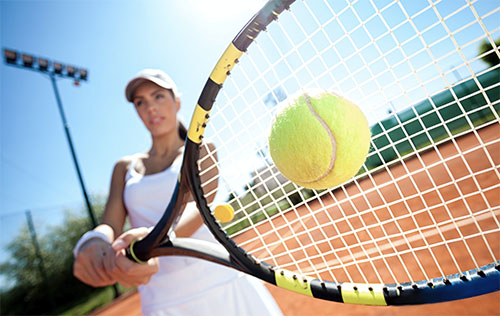Sports Medicine Review and Tips to Stay Injury Free
By Jay Parikh, MD

Over my many years of Medical Practice, one area I continue to enjoy is sports medicine. Sometimes people ask me, “what exactly is sports medicine, is it working with sports teams?” I tell them possibly, but it’s really a term that means working with common sports injuries and, also, everyday injuries that occur in any everyday lifestyle.
Here is a summary of an article I found in my studies that gives a great descriptor of sports medicine “Everything You Need to Know About Sports Injuries and Rehab,” by Dr. W. Morrison.
Overview
Sports injuries occur during exercise or while participating in a sport. Children are particularly at risk for these types of injuries, but adults can get them, too.
You’re at risk for sports injuries if you:
- haven’t been regularly active
- don’t warm up properly before exercise
- play contact sports
Read on to learn more about sports injuries, your treatment options, and tips for preventing them in the first place.
Types of sports injuries
Different sports injuries produce different symptoms and complications. The most common types of sports injuries include:
- Sprains. Overstretching or tearing the ligaments results in sprain. Ligaments are pieces of tissue that connect two bones to one another in a joint.
- Strains. Overstretching or tearing muscles or tendons results in a sprain. Tendons are thick, fibrous cords of tissue that connect bone to muscle. Strains are commonly mistaken for sprains. Here’s how to tell them apart.
- Knee injuries. Any injury that interferes with how the knee joint moves could be a sports injury. It could range from an overstretch to a tear in the muscles or tissues in the knee.
Swollen muscles. Swelling is a natural reaction to an injury. Swollen muscles may also be painful and weak. - Achilles tendon rupture. The Achilles tendon is a thin, powerful tendon at the back of your ankle. During sports, this tendon can break or rupture. When it does, you may experience sudden, severe pain and difficulty walking.
- Fractures. Bone fractures are also known as broken bones.
- Dislocations. Sports injuries may dislocate a bone in your body. When that happens, a bone is forced out of its socket. This can be painful and lead to swelling and weakness.
- Rotator cuff injury. Four pieces of muscle work together to form the rotator cuff. The rotator cuff keeps your shoulder moving in all directions. A tear in any of these muscles can weaken the rotator cuff.
Sports injuries treatment
The RICE method is a common treatment regimen for sports injuries. It stands for: (Treatment that can be done at home)
- rest
- ice
- compression
- elevation
This treatment method is helpful for mild sports injuries. For best results, follow the RICE method within the first 24 to 36 hours after the injury. It can help reduce swelling and prevent additional pain and bruising in the early days after a sports injury. Here’s how to follow RICE, plus a recovery timeline.
Both over-the-counter and prescription medications are available to treat sports injuries. Most of them provide relief from pain and swelling.
If your sports injury looks or feels severe, make an appointment to see your doctor. Seek emergency care if the injured joint shows signs of:
- severe swelling and pain
- visible lumps, bumps, or other deformities
- popping or crunching sounds when you use the joint
- weakness or inability to put weight on the joint
- instability
Also seek emergency attention if you experience any of the following after an injury:
- difficulty breathing
- dizziness
- fever
Serious sports injuries can require surgery and physical therapy. If the injury doesn’t heal within two weeks, contact your doctor for an appointment.
Sports injuries prevention
The best way to prevent a sports injury is to warm up properly and stretch. Cold muscles are prone to overstretching and tears. Warm muscles are more flexible. They can absorb quick movements, bends, and jerks, making injury less likely.
Also take these steps to avoid sports injuries:
Use the proper technique
Learn the proper way to move during your sport or activity. Different types of exercise require different stances and postures. For example, in some sports, bending your knees at the right time can help avoid an injury to your spine or hips.
Have the proper equipment
Wear the right shoes. Make sure you have the proper athletic protection. Ill-fitting shoes or gear can increase your risk for injury.
Don’t overdo it
If you do get hurt, make sure you’re healed before you start the activity again. Don’t try to “work through” the pain. When you return after letting your body recover, you may need to ease yourself back into the exercise or sport rather than jumping back in at the same intensity.
Cool down
Remember to cool down after your activity. Usually, this involves doing the same stretching and exercises involved in a warmup.
Resume activity slowly
Don’t be tempted to nurse your injury for too long. Excessive rest may delay healing. After the initial 48-hour period of RICE, you can start using heat to help relax tight muscles. Take things slowly, and ease back in to exercise or your sport of choice.
Risks
Anyone may find themselves coping with a sports injury, regardless of the last time they suited up for the baseball diamond or squared off with a linebacker on the gridiron. But some factors put you or a loved one at an increased risk for injury.
Childhood
Because of their active nature, children are especially at risk for sports injuries. Children often don’t know their physical limits. That means they may push themselves to injury more easily than adults or teenagers.
Age
The older you grow, the more likely you are to experience an injury. Age also increases the odds that you have sports injuries that linger. New injuries may aggravate these previous injuries.
Lack of care
Sometimes, serious injuries start off as small ones. Many injuries that result from overuse, such as tendonitis and stress fractures, can be recognized early by a doctor. If they’re left untreated or ignored, they can develop into a serious injury.
Being overweight
Carrying around extra weight can put unnecessary stress on your joints, including your hips, knees, and ankles. The pressure is magnified with exercise or sports. This increases your risk for sports injury. Children or adults who plan to begin participating in sports can benefit by having a physical examination by a doctor first.
Diagnosis
Many sports injuries cause immediate pain or discomfort. Others, like overuse injuries, might be noticed only after long-term damage. These injuries are often diagnosed during routine physical examinations or checkups.
If you think you have a sports injury, your doctor will likely use the following steps to get a diagnosis. These include:
- Physical examination. Your doctor may attempt to move the injured joint or body part. This helps them see how the area is moving, or how it’s not moving if that’s the case.
- Medical history. This involves asking you questions about how you were injured, what you were doing, what you’ve done since the injury, and more. If this is your first time visiting this doctor, they may also ask for a more thorough medical history.
- Imaging tests. X-rays, MRIs, CT scans, and ultrasounds can all help your doctor and healthcare providers see inside your body. This helps them confirm a sports injury diagnosis.
If your doctor suspects you have a sprain or strain, they may recommend you follow the RICE method.
Follow these recommendations and keep an eye on your symptoms. If they get worse, that can mean you have a more serious sports injury.
Call your doctor
Call your doctor if there are signs of swelling or if it hurts to place weight on the affected area. If the problem is in the location of a previous injury, seek medical attention right away. Contact a healthcare provider if you don’t see any improvement after 24 to 36 hours of RICE. Because a child’s skeleton isn’t fully developed, the bones are weaker than an adult. Take extra precautions with a child’s sports injuries. What looks like a tissue injury may in fact be a more serious fracture. Don’t ignore your symptoms. Remember, the earlier you get a diagnosis and treatment, the sooner you’ll recover and get back in the game.
Get Medical Treatment
Going to see a professional will really be a great way to prevent the progression of an injury as all injuries begin as new and acute injury and then if they are not improved they remain chronic and then have the potential to become permanent. Seeing a professional office will usually mean seeing the MD, chiropractor, physical therapist, athletic therapist who will work together in various stages of care for you. It is the most complete scenario for healing.
Keep in mind that there are also NON-SURGICAL MEDICAL treatments such as Platelet Rich Plasma, injection therapy using dextrose and lidocaine, which can increase healing in the tendons, muscles, joints while reducing pain and inflammation. Also, athletic taping has become popular and effective for stabilizing and preventing injury to overworked areas.
